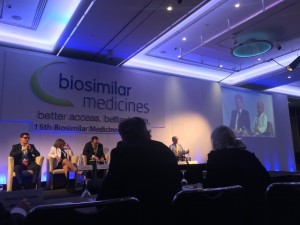Blood transfusions are today safer than any other treatment procedures today in the richest part of the world. But it is less true elsewhere, where the role of unsafe blood transfusions on major dramatic epidemic situations is certainly high although not so well documented: hepatitis B and C and E... and even HIV
...it is estimated by WHO (The World Health Organization) that up to 80% of the world population who need safe blood products don’t get them

By Yves Charpak*
MD, Public Health Specialist, PhD in Epidemiology
Is There a Fair and Equitable Access to Safe Blood Transfusion Products in the World?
We all have in mind historical images of people being saved from death through blood transfusions after accidents, wounds, deliveries, hematological diseases… It is still true in numerous medical situations, but unfortunately it is estimated by WHO (The World Health Organization) that up to 80% of the world population who need safe blood products don’t get them.
We also know that blood transfusion may be dangerous through transmission of various micro-organisms. There were major crisis in Europe and other developed health systems, leading to “the blood contaminated scandals” in the years 80-90. Theses crisis have been sources of major changes in the blood transfusion systems in the most developed countries. Major surveillance systems have been put in place for making sure that the threatening nosocomial diseases like transmission of HIV and hepatitis through blood transfusions are under control. It is fragile but a big success. Blood transfusions are today safer than any other treatment procedures today in the richest part of the world.
But it is less true elsewhere, where the role of unsafe blood transfusions on major dramatic epidemic situations is certainly high although not so well documented: hepatitis B and C and E… and even HIV…
A huge burden of disease in emerging and developing countries is on its way on hepatitis. In the former especially, because the increase in life expectancy will allow existing chronic hepatitis infections to develop toward cirrhosis and liver cancers in the future.
HIV is a worldwide concern, but even the numerous international or bilateral aid institutions specialized on HIV – UNAIDS, GFATM, UNITAID, WHO, EU, PEPFAR, etc.- are not addressing seriously the transmission of the virus through blood transfusions. And hepatitis are only considered as “co infection” problems.
The international “solution” for hepatitis can be seen through GAVI programs (Global Alliance for Vaccines and Immunization). GAVI intends to vaccinate massively young children against hepatitis B (therefore children will not get it in the future, even if exposed to it). Hepatitis C is more and more covered through patents agreements to provide worldwide antiviral treatment for hepatitis C.
But a worldwide strategy to prevent what is probably, at least partly, a major nosocomial problem linked to blood transfusions is yet to be seen.
Could blood transfusion lack of products be considered as an “orphan disease” ?
WHO has been for long advocating for safe ad sufficient blood transfusion…
Blood transfusion products have been put recently on the list of essential drugs of WHO.
The introduction of “labile blood products” (LBP; the red cells, the platelets and the plasma for transfusion) on the list was opposed by a lot of the blood transfusion institutions in the developed world, because they consider themselves as not being part of the “medicine system”. Therefore there is no international trade of blood products for transfusion (LBP).
It is important to mention that this article is not addressing another part of the blood products which is the transformation of some collected plasma into “pharmaceutical drugs”, called the PMD, Plasma Derivated Drug.
The situation regarding the blood products for transfusion (LBP) is that the blood banks, being out of the “Medicine industry”, have their own system of quality and Good Manufacturing Practices. This situation protects them from the worldwide trade of medicinal products. Most developed countries are “self-sufficient” and don’t allow usually import of products. It fits well with WHO recommendations, advocating for country self-sufficiency worldwide based on non-paid donations (Voluntary Non-Remunerated Donations, VNRBD).
This is “value based” and very nicely in line with most international or regional human right treaties.
But real life is challenging this value based policy. There is no visible timeline for the achievement of a perfect solution. In between, waiting for success of the ideal policy, the situation of shortage of safe products is creating favorable environment for future health problems which is not addressed properly.
As no specific international aid program is supporting all countries to achieve quickly their expected self-sufficiency in the coverage for blood transfusion products, the situation is dramatic in many places, when looking at WHO description of the situation with a reverse view: looking at the gaps instead of the improvements provides the real situation (http://www.who.int/mediacentre/factsheets/fs279/en/).
WHO text is in italic and between quotes.
«The risk of transmission of serious infections, including HIV and hepatitis, through unsafe blood and chronic blood shortages brought global attention to the importance of blood safety and availability. With the goal of ensuring universal access to safe blood and blood products, WHO has been at the forefront to improve blood safety and availability, and recommends the following integrated strategy for blood safety and availability: »
Types of blood donors
«There are 3 types of blood donors:
- voluntary unpaid
- family/replacement
- paid.
An adequate and reliable supply of safe blood can be assured by a stable base of regular, voluntary, unpaid blood donors. These donors are also the safest group of donors as the prevalence of bloodborne infections is lowest among this group. »
« Data reported to WHO shows significant increases of voluntary unpaid blood donations in low- and middle-income countries: »…
BUT,
« In 72 countries, more than 50% of the blood supply is still dependent on family/replacement and paid blood donors (11 high-income countries, 45 middle-income countries and 16 low-income countries) »
Family/replacement donors are often the only way for a patient to get blood transfusion: if a patient needs a transfusion, he would (or his family) bring a donor, wherever they find him/her, to replace the products that will be used. And sometimes they just directly pay for “professional” donors outside the facility, even not knowing them…
And there are also blood banks getting donations through paid donors. For most of those paid donors the payment may be the only resource available, leading them to put in danger their own health by repeating it too often. And for the blood bank and the recipient patients it leads to more risky donations. Especially if no proper testing is available.
Blood screening
« WHO recommends that all blood donations should be screened for infections prior to use. Screening should be mandatory for HIV, hepatitis B, hepatitis C and syphilis. Blood screening should be performed according to the quality system requirements. »
BUT
- « 16 countries are not able to screen all donated blood for 1 or more of the above infections.
- Irregular supply of test kits is one of the most commonly reported barriers to screening.
- 81% blood screening laboratories in high-income countries are monitored through external quality assessment schemes, as compared to 55% in middle-income countries and 34 % in low-income countries.
- The prevalence of transfusion-transmissible infections (TTI) in blood donations in high-income countries is considerably lower than in low- and middle-income countries ».
Safety of use:
« WHO recommends the development of systems, such as hospitals transfusion committees and haemovigilance, to monitor and improve the safety of transfusion processes. In this regard: »
- « 125 countries (Among 194 WHO Member States) have national guidelines on the appropriate clinical use of blood.
- Transfusion committees are present in 67% of the hospitals performing transfusions in high-income countries and in 34% of the hospitals in middle- and low- income countries.
- Clinical audits are conducted in 54% of hospitals performing transfusion in high-income countries and in 42% of hospitals in the middle- and low- income countries.
- Systems for reporting adverse transfusion events are present in 92% of hospitals performing transfusion in high-income countries and 40% in middle- and low- income countries.
- 72% of high-income countries have a national haemovigilance system, compared to only 28% of middle- and low-income countries. »
« In high-income countries, transfusion is most commonly used for supportive care in cardiovascular surgery, transplant surgery, massive trauma, and therapy for solid and haematological malignancies. In low- and middle-income countries it is used more often to manage pregnancy-related complications and severe childhood anaemia. »
To conclude, WHO is one of the only international organizations advocating for sufficient and safe blood products worldwide, with almost no resources allocated for implementing related programs.
But the present situation shows that the expectations of the advocated policies are far from being achieved in many emerging and developing countries, creating a dangerous situation for the future: a huge burden of disease for tomorrow is being created today, but invisible to major international aids’ agendas.
The crisis which occurred in Europe and developed countries, named “contaminated blood scandals”, may well pop up in most countries tomorrow. The developed world leading the agenda on international aid will have its own responsibility in not trying to address it:
– Reinforcing the international support to WHO recommendations by giving more focus on building safe blood transfusion systems everywhere.
– Making sure that all health facilities in the word where blood transfusion products are needed for patients get it, whatever that means. It could well include international circulation of safe blood transfusion products (LBP) at affordable prices for poor countries.
– As most blood donations are done in the developed world today, could those genuine and generous donors give a bit more for helping poorest part of the world get the blood products they need, waiting for them to be self-sufficient? It would be a shift in blood donation policies in our rich countries… but potentially very rewarding.
—————————————–
*Yves Charpak is a public health MD with a PhD in Epidemiology. From 1981 to 2000 He worked as a researcher in Health technology Assessment (HTA) and clinical epidemiology, and then as consultant in evaluation of health systems in his own company (EVAL). He then moved from 2000-2007 to WHO regional office for Europe as senior policy advisor to the Regional Director. Then he was back to France as head of international affairs of Institut Pasteur, followed by head of prospective studies in the French blood transfusion systems (EFS) and its representative in European Blood Alliance (vice-president of EBA).
He is member of various think tanks on health and vice president of the SFSP (Société Française de Santé Publique).
He writes and talk on health issues in journals, papers and social media.
He wrote a book in 2016 with his former Director of WHO regional Office, Marc Danzon: “La santé dans l’arène politique mondiale”, Editions Belin, Paris

















